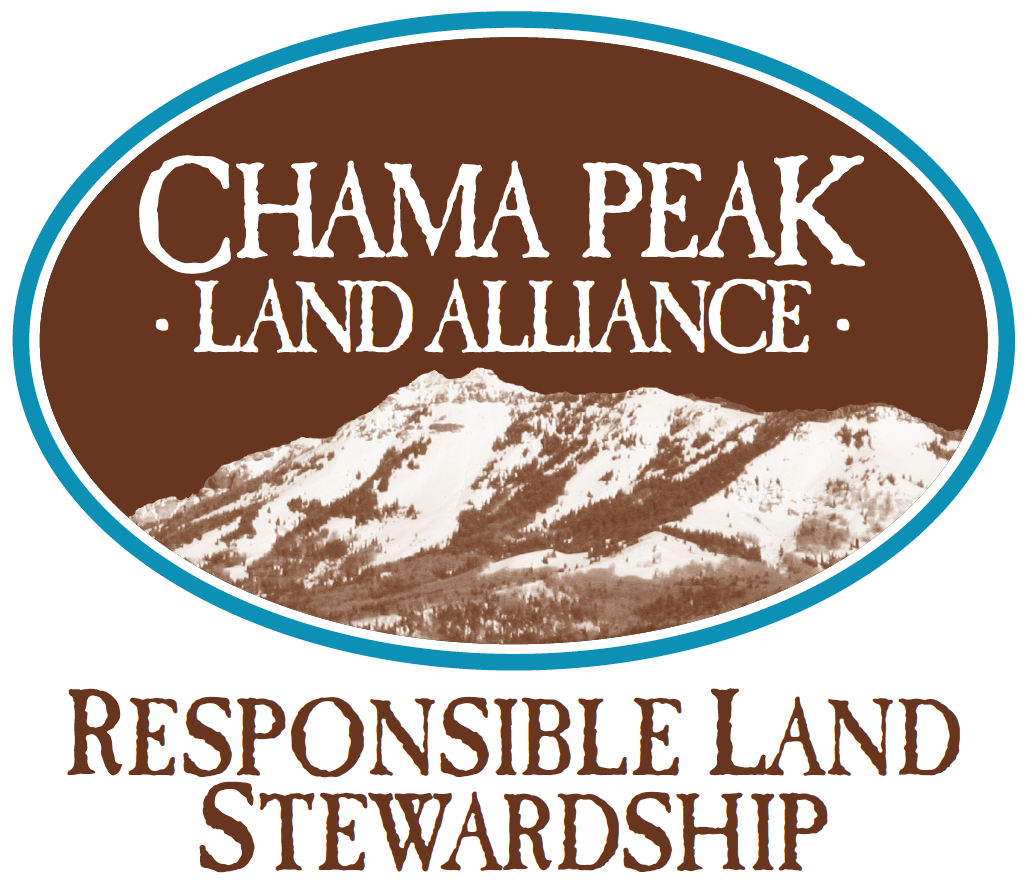WILDLIFE AND FISHERIES
Land health and wildlife survival are dependent on the ability of wildlife populations to move across the landscape. In the Alliance region, this is particularly important as wildlife roam from the high elevations in summer to the lower elevations for winter. The Alliance has initiated an effort to identify and protect wildlife movement corridors across public and private boundaries. Partners in this effort include private landowners, the Jicarilla Apache Nation, the Southern Ute Tribe, and state and federal agencies.
Chamita Valley
Many of the Alliance members are adjacent landowners and much of the Alliance region is currently being managed with conservation and wildlife in mind. Members of the Alliance are working to attract conservation opportunities for these remaining parcels.
For example, the Chamita Valley is a major funnel for wildlife migrating between summer range in the high elevations of the San Juan mountains of Colorado and winter range in the lower elevation woodlands of northern New Mexico.
Migration Corridors
The Alliance develops close relationships with tribes and state and federal wildlife agencies in both Colorado and New Mexico to improve wildlife management and viability, including long distance migration corridors of mule deer and elk between summer and winter ranges. Alliance members have also called attention to elk harvest levels. Some members of the Alliance have voluntarily reduced the number of landowner game permits they use in order to improve the sustainability of elk populations over the long-term. This has benefits for current and future generations as well as maintaining a vital economy in our rural landscape.
Economy
The economic contribution of hunting, fishing and wildlife watching is direct and positive for local individuals, businesses and communities. Wildlife creates jobs and brings money into local and state economies through retail, lodging, dining purchases, and sales taxes. The county-by-county totals for the Southwest Region illustrate just how important hunting and fishing are to the local economy: Alamosa sees $20.3 million in economic activity; Archuleta, $19.1 million; Conejos, $4.2 million; La Plata, $43.3 million; Mineral, $4.4 million; Rio Grande, $13.3 million; Saguache, $3.3 million; San Juan, $3.9 million; San Miguel, $17.3 million; Ouray, $3.4 million.
CURRENT AND RECENT PROJECTS
RIO GRANDE CUTTHROAT TROUT
One of 14 subspecies, the Rio Grande Cutthroat Trout once likely occupied all streams capable of supporting trout populations in the Rio Grande, Pecos, and Canadian River basins but is now restricted to approximately 12.5% of historical habitat. This decline has occurred due to habitat loss from stream diversions, stream drying, competition from nonnative fish species and hybridization with introduced trout species, and overall changes in hydrology and streamflow.
In 2017, the Alliance received funding from the New Mexico Habitat Conservation Initiative to compile statewide research on Rio Grande Cutthroat Trout (Oncorchynchus clarkia virginalis) and the feasibility, challenges, and work required to expand populations of New Mexico’s state fish to more of its historic range. This project involved reviewing the current state of science and practice of Rio Grande Cutthroat Trout management, reaching out to numerous expert partners, mapping the historic trout range and current distribution, and examining social acceptance for Rio Grande Cuttroat Trout reintroductions. The potential impact of climate change on native trout and preliminary opportunities to expand trout populations on private lands were also investigated.
Current and future efforts include Alliance participation with the multi-partner Rio Grande Cutthroat Trout Range-wide Conservation Team and further analysis of private land restoration potential in the region.
Read the final report here. A higher resolution PDF is available upon request.
WILDLIFE POPULATION AND MOVEMENT
Chama Peak Land Alliance (CPLA) contracted with Tom Watts, Southwest Wildlife Services LLC, to complete a study of mule deer and elk in the Alliance region. The CPLA Report compiled all of the pertinent information regarding mule deer and elk populations inhabiting the upper San Juan and Chama River Basins for the benefit of CPLA Members and landowners interested in maintaining healthy wildlife populations in the region. Numerous past and on-going radio-telemetry studies have documented the migratory patterns of mule deer and elk in this region, and highlighted the need for cooperative management among the four wildlife agencies that oversee harvest in these shared herds. In recent years the mule deer population has exhibited marginal fawn recruitment rates, and declining mature buck:doe ratios, indicative of a declining population and excessive harvest rates. The elk population has also suffered from reduced recruitment in recent years, coupled with chronically high bull elk harvest rates, resulting in a decreasing population characterized by very low bull:cow and mature bull:cow ratios. The two state wildlife management agencies accounted for approximately 90% of the elk and mule deer harvest in the CPLA Project Area, and the need for coordinated harvest has never been greater.
In 2018, CPLA again worked with Tom as he prepared an update to the 2014 report that includes an additional three years of data and provides a current assessment of of elk and mule deer herds in the CPLA region.
Click here for a copy of the full 2014 report.
Click here for a copy of the 2018 update.



